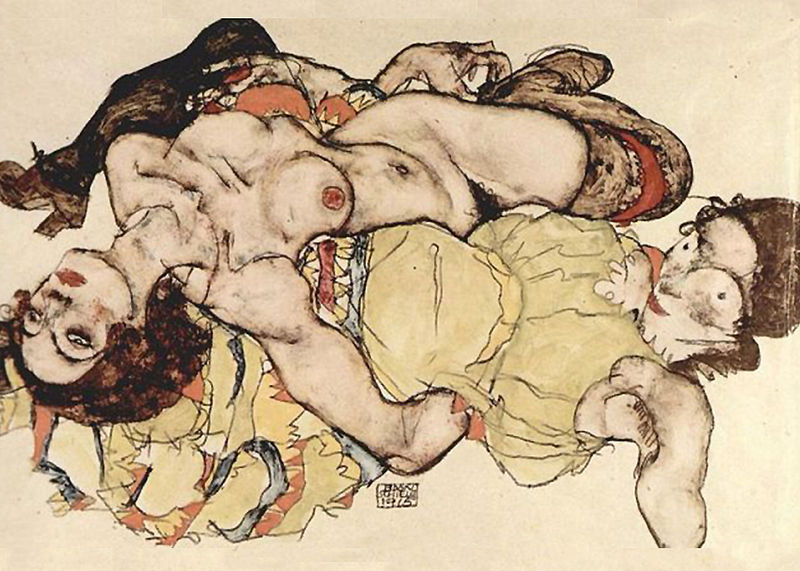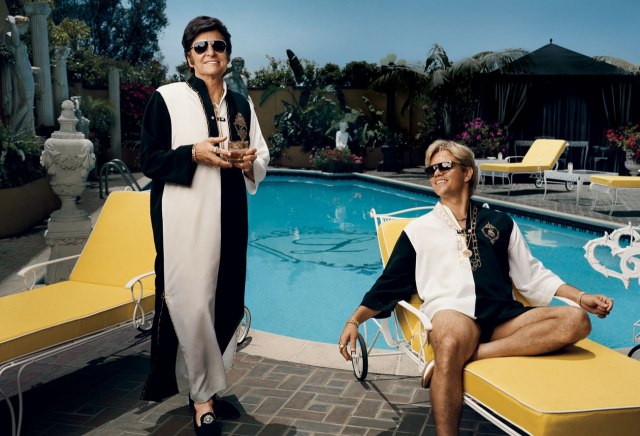There is almost a synonymous relationship between modern art and various degrees of eroticism extending to the outright perverse, which was implicit from Manet and Picasso and remains a significant, even vital component in its post-modern manifestations straddling the blurred lines and muddy glass bottoms between art and pornography. What is deemed to make it innovative are variations of perversity in both attitude and form. Much of the appeal of course is curiosity, the deviations from the normative found in adventurous sexuality; and some of our most well known artistic works deal with perversion, generally quite openly and often intentionally perverse in a structural and arranged sense, staged for display to appeal to the voyeuristic eye with all the craft of automatism and method brought to bear, basically with women as the subject matter usually as a form of portraitism connoting a state of rage and resigned futility sublimated as codified reasoning enabling a construction of intellectual arguments that rationalize the traffic of emotions that fall outside the domain of religious law and back towards Sappho, Hellenism, the Pompeii lifestyle and the Egyptian ruling class of ten plagues fame all converted into concrete political reality or some form of surreal nightmare.
Art does rope in experience that lies beyond an instinctual reaction to reality that can be perceived, but which also modifies the art produced in a significant manner. Widespread fascination with the macabre, absurd, obscure, death, lend themselves to seeing our personal and collective histories as pierced by bout of “abnormality” and nonsensical, irrational behaviour, which supposedly can be nurtured to shine some light on the meaning of our identity on a more comprehensive level than a personal sense of nationalism as it teeters between inferiority and patriotism. All good art then, in turn, poses a substantial dilemma of reconciling less than savoury acts coexisting with the potential for remarkable emancipation and spirituality; the atrocious with cultural flowering…

Egon Schiele: Two Women.—
Like those of Picasso – the only twentieth-century artist comparable as draughtsman – Schiele’s depictions of women are his erotic autobiography as well as the terrain where he explored radical possibilities of representation, figural and psychological, liberated from academic constraint.—click image for source…
( see link at end)…“I have infinite tenderness for you,” one woman tells another in “Blue Is the Warmest Color,” and it’s a sentiment that also describes director Abdellatif Kechiche’s attitude toward his characters in this searingly intimate, daringly attenuated portrait of a French teenager and her passionate relationship with another femme. Post-screening chatter will inevitably swirl around not only the galvanizing performances of Adele Exarchopoulos and Lea Seydoux, but also the fact that they spend much of this three-hour emotional epic enacting the most explosively graphic lesbian sex scenes in recent memory. The result is certain to stir excitement and controversy on the fest circuit while limiting the film’s arthouse potential, barring significant trims for length and content.

—And Steven Soderbergh’s Liberace biopic “Behind the Candelabra”, starring Michael Douglas and Matt Damon, also includes depictions of gay sex that push boundaries.
In an era of greater tolerance towards different sexual orientations, the films coincide with the emergence of gay marriage as a top political issue and a sense among filmmakers that audiences are no longer automatically turned off by same-sex love stories.
“Blue is the Warmest Colour” (“La Vie d’Adele, Chapitres 1 et 2″), about a love affair between a Frenchwoman and a teenage girl, is one of 20 films competing for the festival’s top Palme d’Or prize.
Tunisian-born French director Abdellatif Kechiche said his film was not intended as a statement.—click image for source…
…Still, it’s a measure of the honesty and generosity of Kechiche’s storytelling that the picture’s explicit sexuality and extreme running time feel consistent with his raw, sensual embrace of all aspects of life, an approach also apparent in the writer-director’s masterful 2007 drama “The Secret of the Grain.” Indeed, it would be reductive to slap an exclusive gay-interest label on “Blue Is the Warmest Color,” a bildungsroman and first-love story whose deep and abiding fascination with life’s great shared pleasures — food, sex, art, literature, music, conversation — encourages the viewer to consider the commonality as well as the vast complexity of human experience.
Having previously examined the lives of artistically inclined youth in 2004′s “Games of Love and Chance,” Kechiche and co-writer Ghalya Lacroix (who also served as one of four editors) have narrowed their focus yet deepened their emotional palette with this very loose adaptation of Julie Maroh’s 2010 graphic novel, “Le Bleu est une couleur chaude.” Fittingly for a story about a girl’s sentimental education, the film’s French title, “La Vie d’Adele: Chapitres 1 et 2,” is a nod to Pierre de Marivaux’s unfinished 18th-century novel “La Vie de Marianne” — an assigned text at the Lille high school where we first meet Adele (Exarchopoulos), a sensitive, unassuming 15-year-old with a passion for literature.

—“I’m glad you like it,” he would say after modeling his latest outfit onstage. “You paid for it”—and exploded out of the postwar closet of Puritan repression. Only, in Liberace’s case the closet held more than his wardrobe. Lee (as his friends called him) was a camping, vamping gay man who never “came out,” inhabiting pop culture’s original glass closet. As Dave Hickey writes in his essay “A Rhinestone As Big as the Ritz,” “Liberace’s closet was as democratically invisible as the emperor’s new clothes…. Everybody ‘got it.’ But nobody said it.” Until the shattering came. In 1982, Liberace’s former live-in chauffeur, bodyguard, secretary, and boy toy, Scott Thorson (portrayed by Matt Damon under a sandy thatch of 70s hair), sued for “palimony” and later wrote the memoir on which this movie is based.—click image for source…
As the film soon makes clear, following a brief romance with cute classmate Thomas (Jeremie Laheurte), Adele also harbors feelings for women — specifically, for a university fine-arts student named Emma (Seydoux), a pale beauty whose short blonde hair is streaked an alluring, rebellious blue. After an encounter at a lesbian bar followed by a series of meetings, during which the older, worldlier Emma gently puts the nervous, inexperienced Adele at ease, the two eventually become lovers.
All this unfolds in Kechiche’s signature style of long, flowing conversations marked by overlapping dialogue, performed in a vein of seemingly artless naturalism, but sculpted with unerring precision and a strong sense of drive…Read More:http://variety.com/2013/film/reviews/cannes-film-review-blue-is-the-warmest-color-1200486043/
It does appear that the effort of Blue is the Warmest Color as personal vision is a sincere one and a serious artistic endeavour, one opposed to Western, essentially Christian culture superficiality which denies the vital juices of things in favor of the dialogue of trade and consumption. In a stagey, prefigured way, Kechiche’s choice of figures are a kind of murky depth within Occidental society’s superficiality that captures the sort of meditating and hallucinatory nature that makes up the known limits of abstraction ,or at least abstraction that is mediated by images while remaining complicit, and firmly so, with work that falls withing the norms and accepted framework of what is mainstream modernism and the aesthetic of being neutral and unrelated despite the imagery of deep personal involvement, the condition of being too civilized and bourgeois, meaning they can acknowledge a desire for intimacy and love but only in a narcissistic sense conveyed on the screen as exhibitionism where the display of emotions and bodies is inversely proportional to the level of commitment.
Biblically, Lesbian relations are forbidden, though not a specific prohibition, since there is no intercourse, a transgression of rebellious conduct and something of a grey zone between rights, responsibilites and the swing door between relations with men, all outside the sanctions imposed by harlotry…





 COMMENTS
COMMENTS